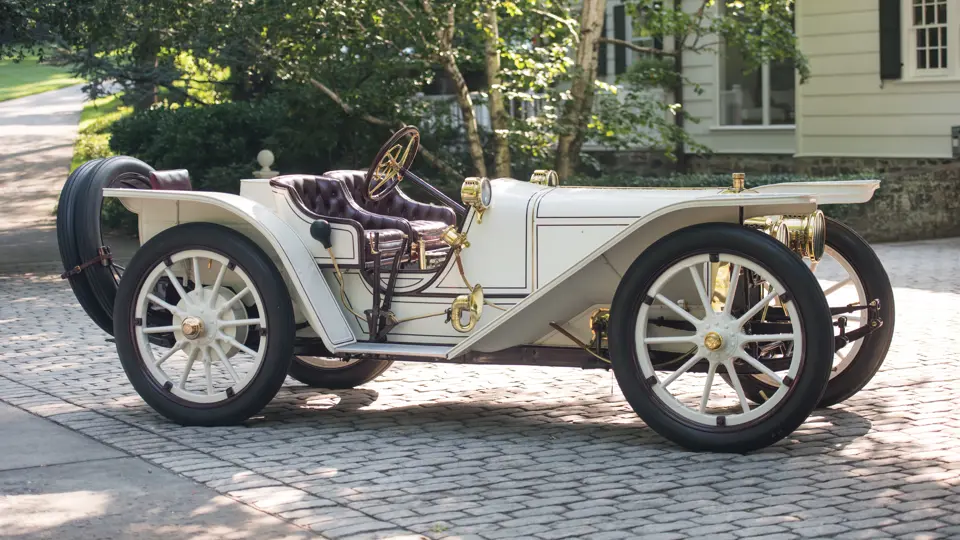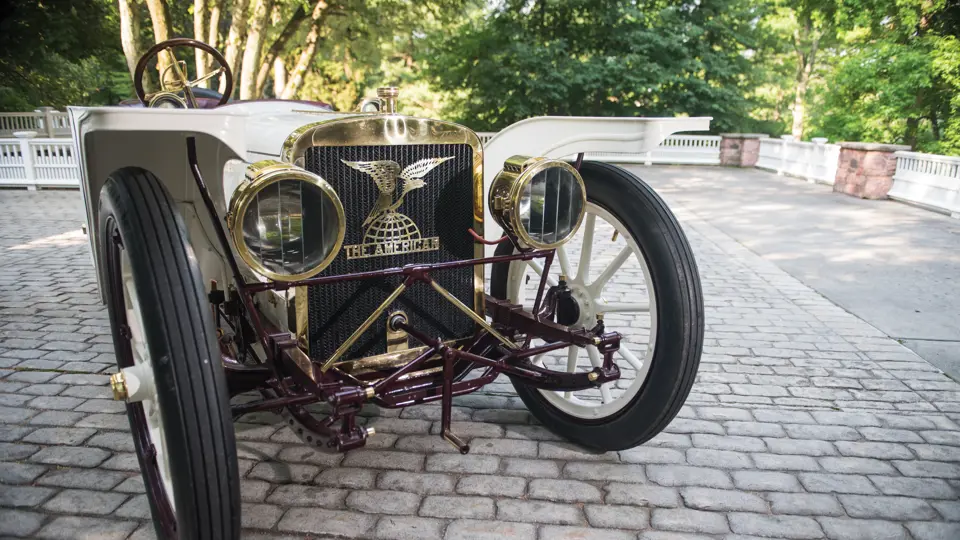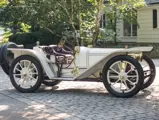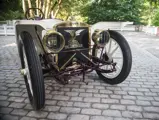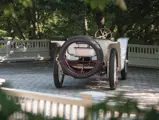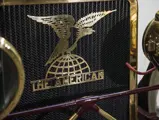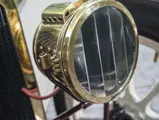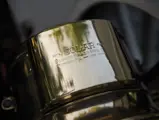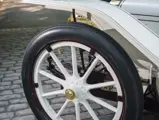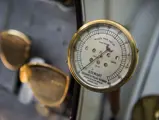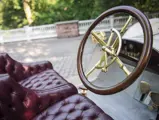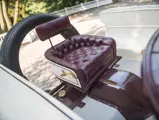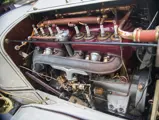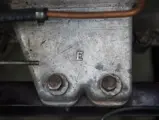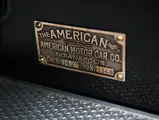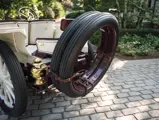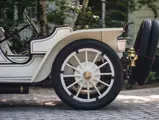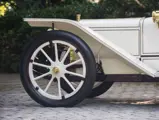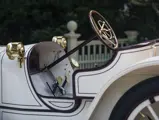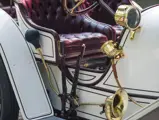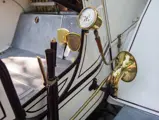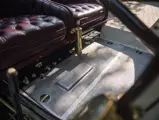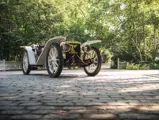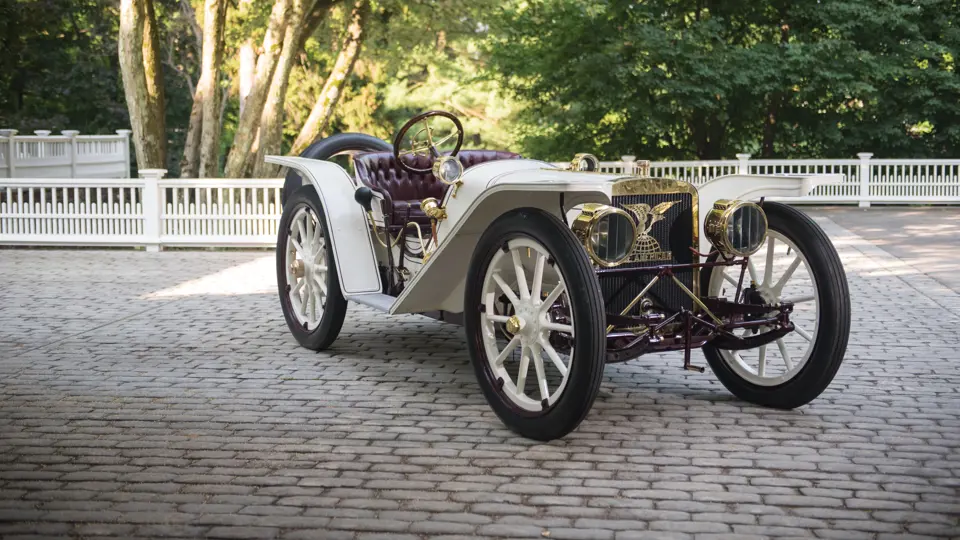
1908 American Underslung 50 HP Roadster
{{lr.item.text}}
$1,400,000 - $1,750,000 USD | Not Sold
Sam & Emily Mann: A Collection by Design
{{bidding.lot.reserveStatusFormatted}}
- Offered from the Collection of Sam & Emily Mann
- A big-horsepower early American sports car with superb proportions
- Formerly of the Lindley Bothwell and D. Cameron Peck collections
- Highly authentic, including original bodywork and sporting wonderful patina
- A performance contemporary of the Mercer Raceabout and the Stutz Bearcat
50 rated hp, 476.5 cu. in. T-head inline four-cylinder engine, four-speed manual transmission, front and rear underslung leaf spring suspension, transmission brake, and rear-wheel drum brakes. Wheelbase: 124 in.
The American Underslung, a factory-bestowed nickname of sorts, not a model name, was one of the foremost automobiles built in Indianapolis during an era when the Crown City was one of the Midwest’s centers of motor car production. Designed by Fred Tone, it featured a highly advanced chassis design that ran under and dipped between the axles, lowering the car’s body closer to the ground and, therefore, also its center of gravity. This resulted not only in beautiful, slinky styling – the E-Type of its era – but in superb handling to match the performance of brutal T-head four-cylinder engines.
The American was expensive, and it was worth it. It was a beautifully constructed performance automobile that represented the height of performance at the time, as the Ford GT does today. By virtue of its combination of the most powerful available engine with one of the first American chassis to be designed with performance and handling in mind, and with lightweight bodywork, it can justifiably be considered the United States’ earliest sports car – introduced several years before its nearest competitors, the Mercer and Stutz.
A LIFE SPENT IN WONDERFUL COLLECTIONS
The known ownership history of Sam and Emily Mann’s American Underslung begins amidst orange groves in Southern California as part of the pioneer collection assembled by Lindley Bothwell. Mr. Bothwell was one of the West Coast’s earliest appreciators of fine automobiles; his collection appeared frequently in early hobbyist magazines, and today many of his great cars are still maintained by the third generation of Bothwells on the family ranch.
In the late 1940s, Mr. Bothwell passed his American Underslung to his Midwestern contemporary, D. Cameron Peck, heir to an industrial dairy fortune, who had gathered hundreds of great automobiles in Chicago warehouses during this period. Reportedly Mr. Peck occasionally exercised this particular car in early events of the “hobby.”
Between 1949 and 1952, the bulk of the Peck collection was liquidated at what has become a legendary series of auctions, representing the first “private collection sales.” Such was already the wide-ranged fame of the Peck hoard that fellow enthusiasts traveled from around the country to pick up a car for themselves – or, in the case of John Wallerich, a collector from the Pacific Northwest, five, including a McFarlan, a Rolls-Royce, and this American Underslung. It would remain with the Wallerich family for over 30 years before joining the well-known collection of beloved enthusiast Richie Clyne, known for loving and enthusiastically driving the biggest and fastest automobiles of the Brass Era. Mr. Clyne enjoyed the car frequently and displayed it selectively at concours d’elegance, including at the Amelia Island Concours d’Elegance in 2014.
Acquired by the Manns from Mr. Clyne, the car is now in only its fourth ownership since the 1940s, and every owner has taken wonderful care of it. It remains very much as it was known by Peck and Bothwell, including the original roadster coachwork, and has a wonderfully authentic appearance and patina throughout, down to the decorated headlight lenses and the large wooden wheels, so often chopped down during the Second World War to fit more readily available tires. The original serial number tag is even still intact!
Work performed by the Mann Collection includes fabrication of a set of six new wooden wheels along with some electrical sorting. Chassis 1427 remains in fine running and driving order, and as one of the earliest extant American Underslungs, it is one of the fewer still with authentic original roadster coachwork, and one of even fewer with the largest and hottest 50 horsepower engine. Sam describes his acquisition of this car as the end of a long search for a Brass Era car with aesthetics that are “just right.” Sam muses, “The more I look at this car, the more I get obsessed with it, the design just catches a spirit of speed, youth, and exuberance – and that is what is most appealing to me about this car.” Having recently completed a restoration on their 1914 Underslung, the Manns are affording a new enthusiastic caretaker the opportunity to add their name to its notable roster of owners.
The Underslung is robustly strong and powerful, and genuinely fast, enough so to enable easily running in HCCA and other Brass Era tours. To take position behind the wheel to drive it is to understand the evocative appeal of these road-going locomotives, and to appreciate why they figure into the renowned collections of those who have followed Peck, Bothwell, and Wallerich: Nethercutt, Simeone, and, of course, Mann.




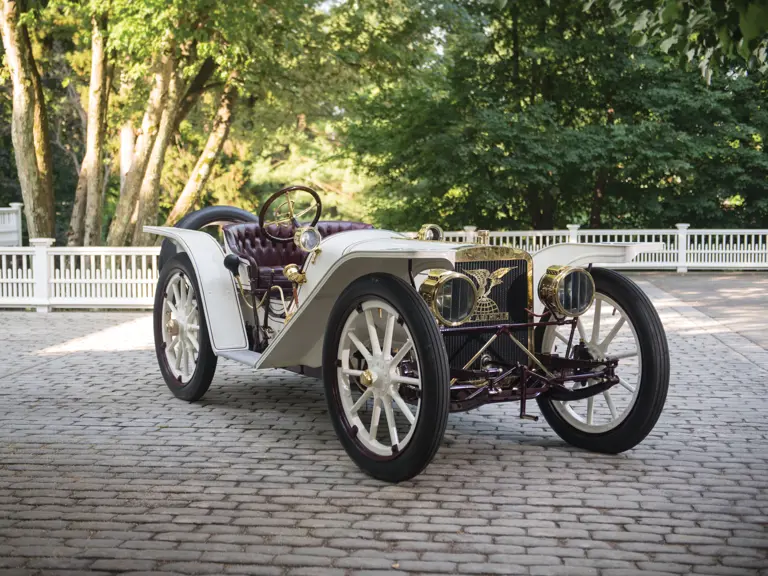

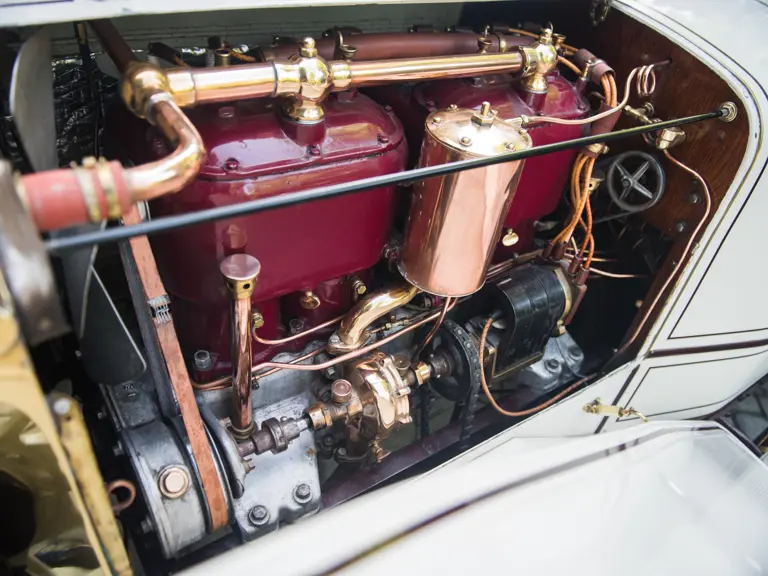
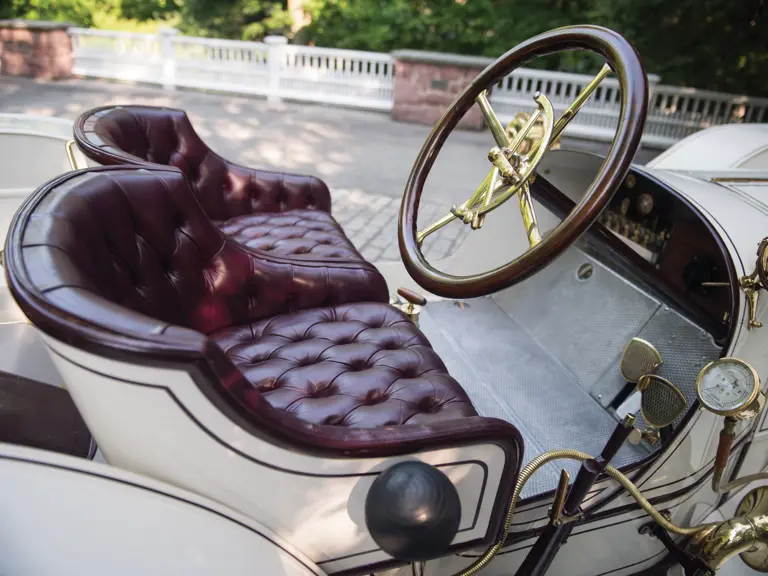
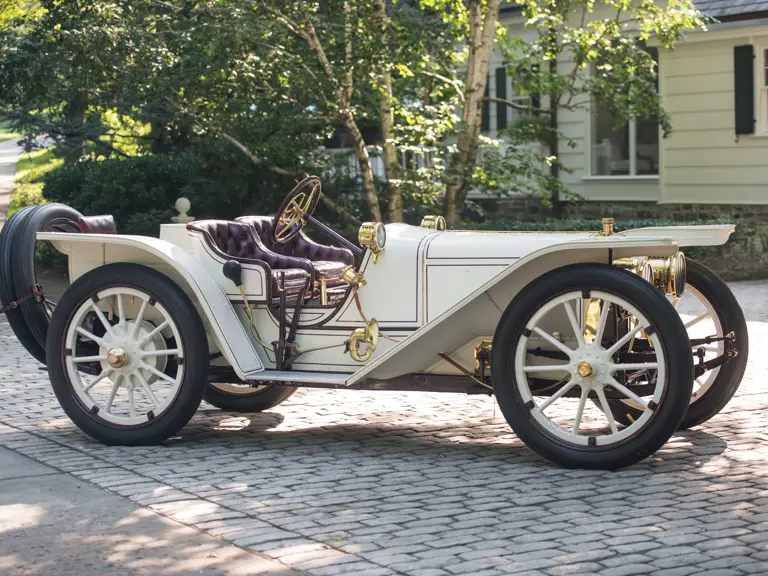
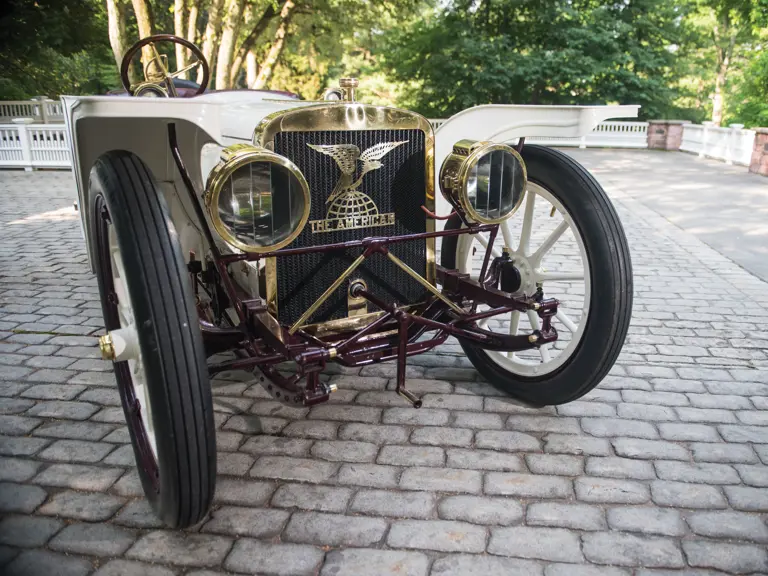
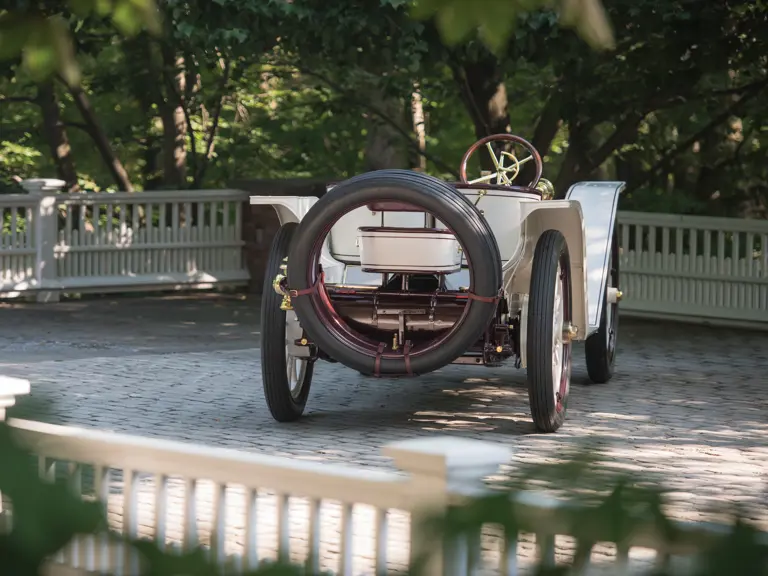

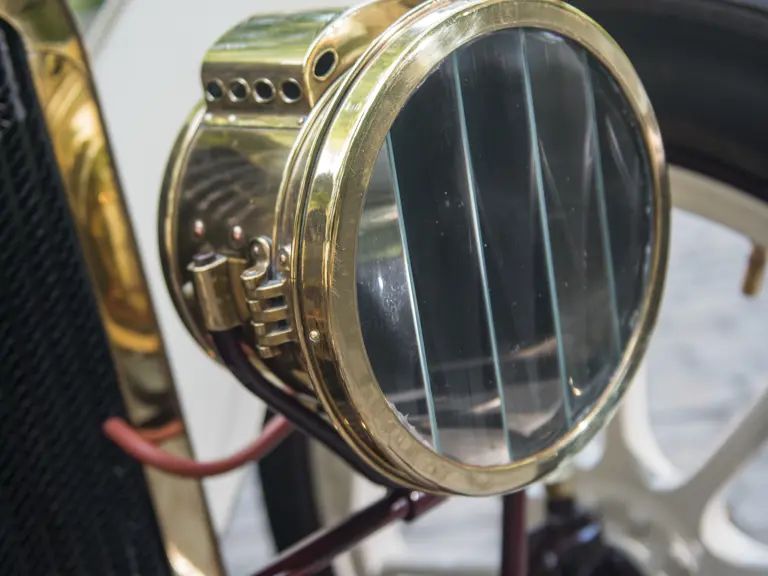
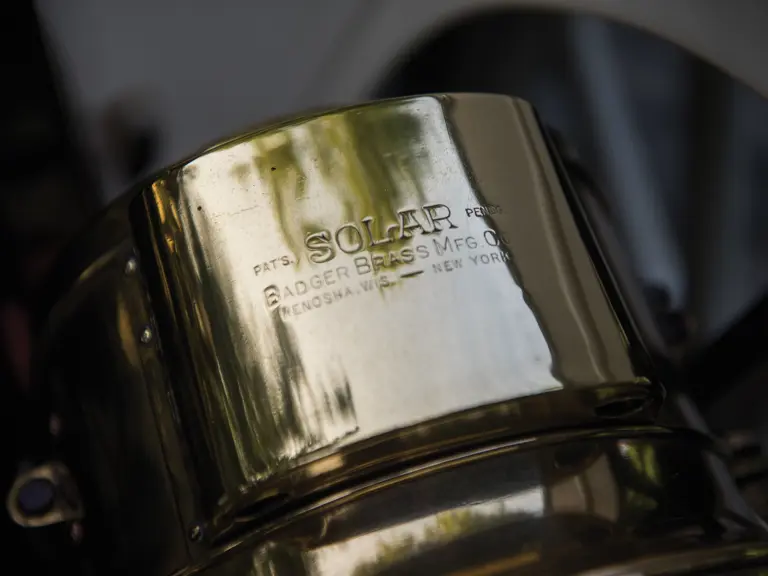
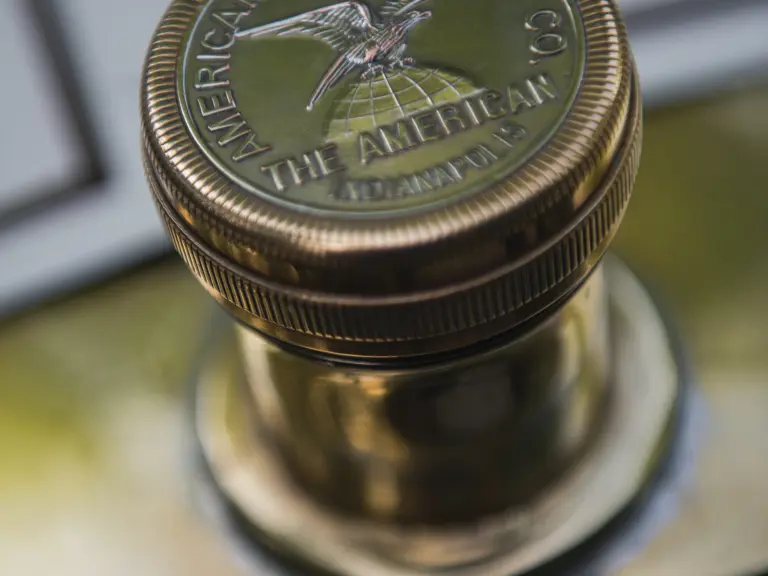
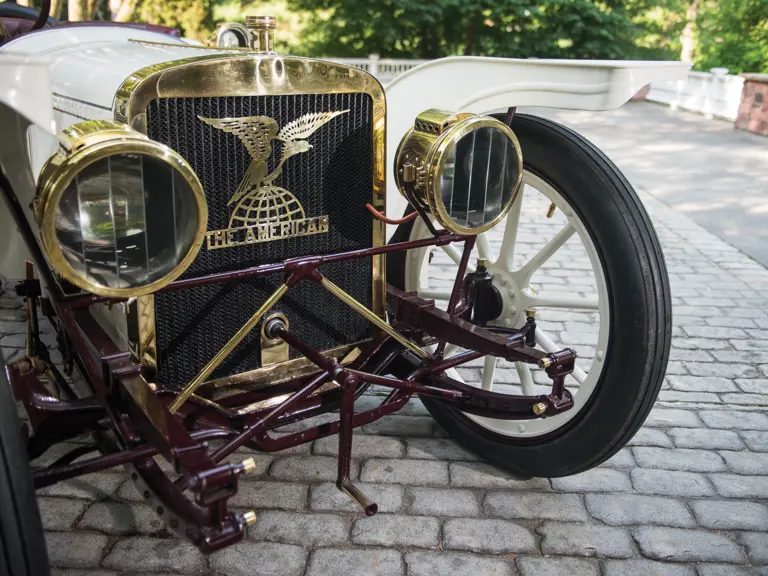
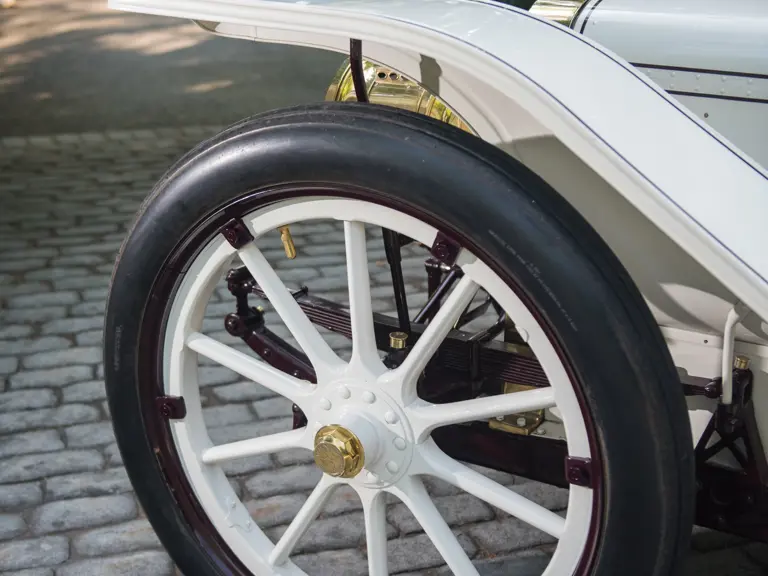
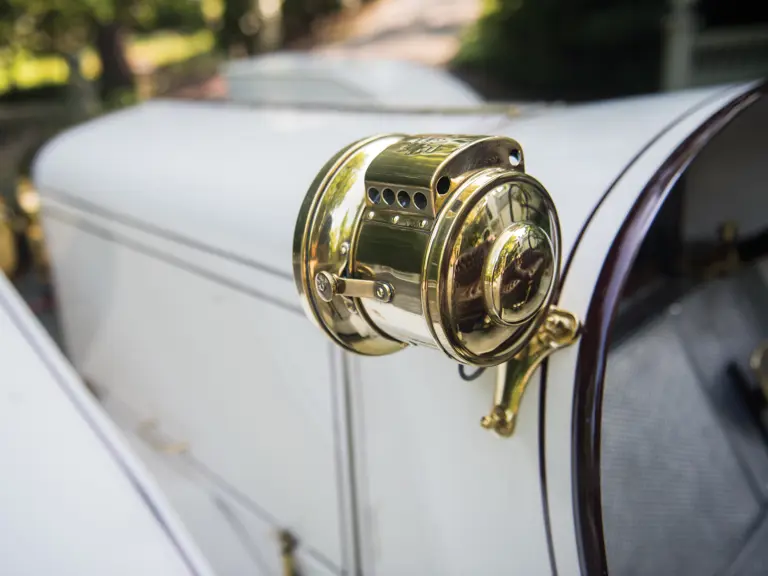
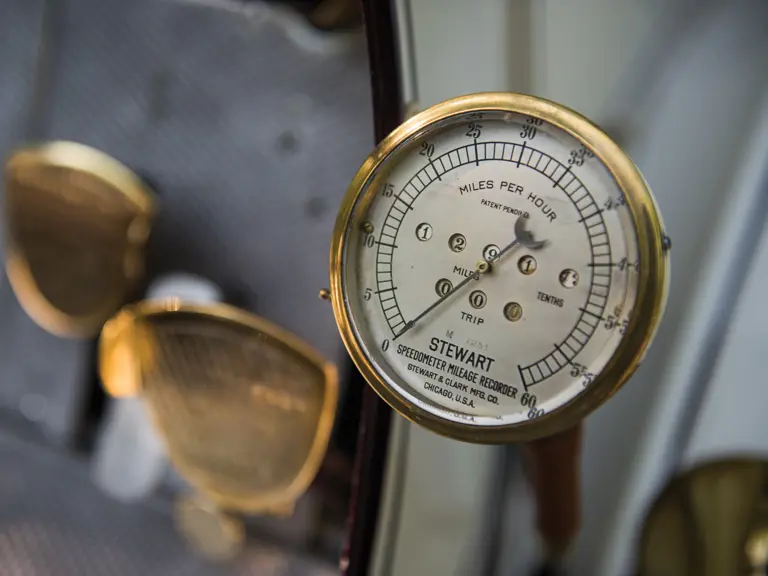
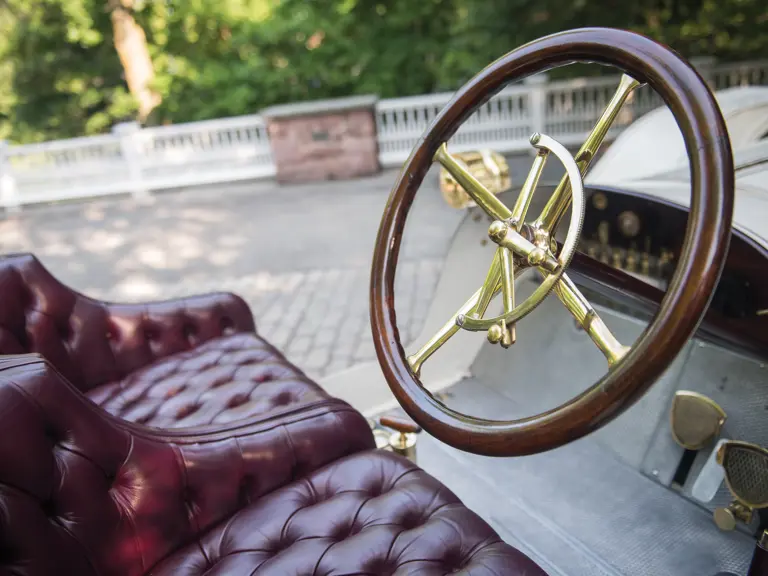
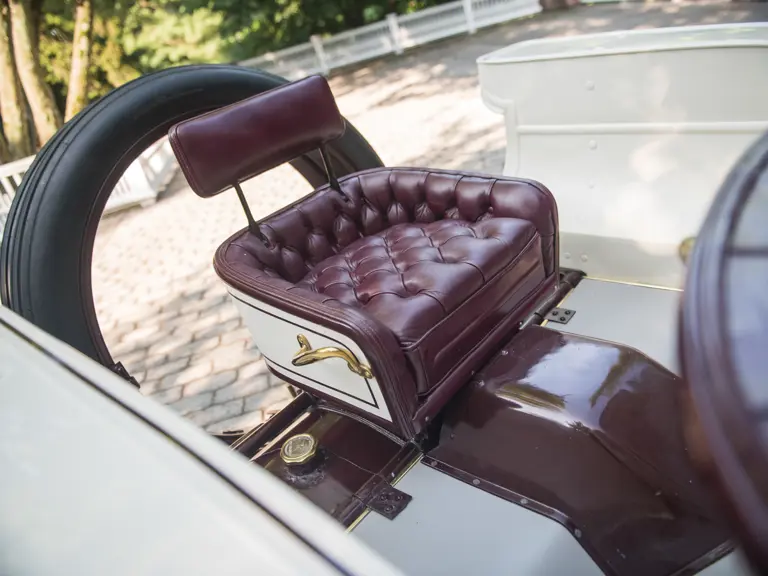
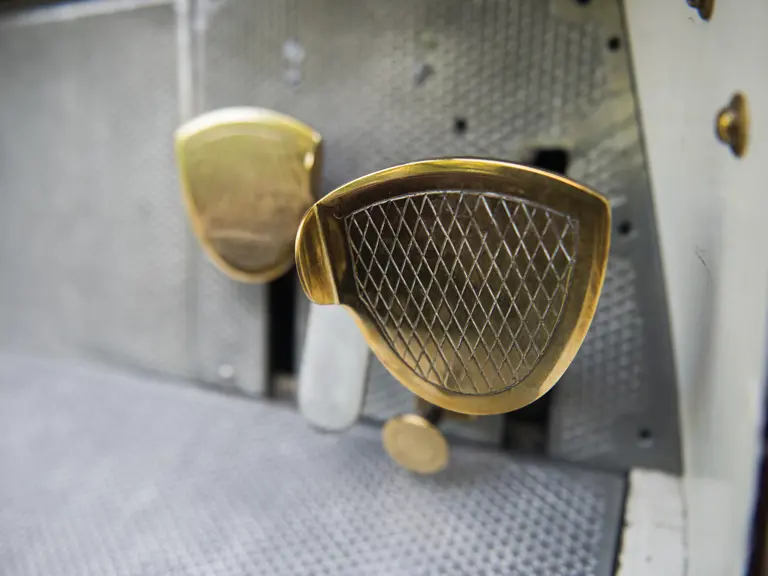
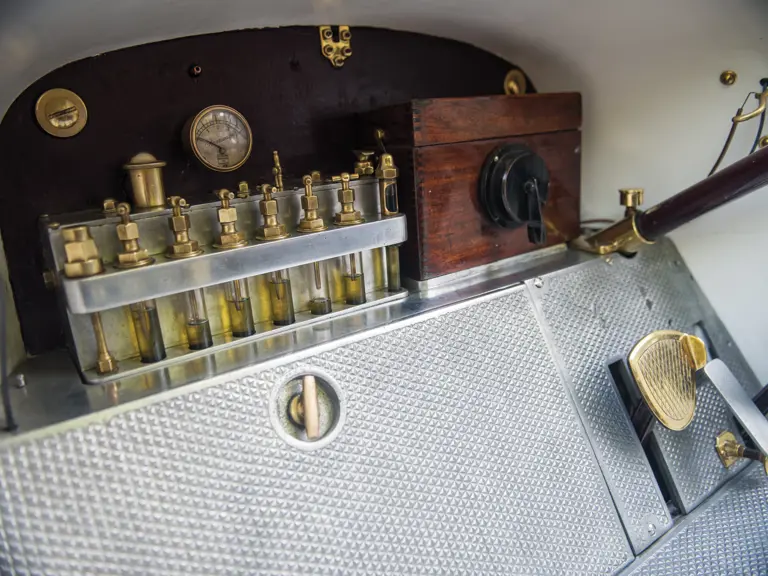
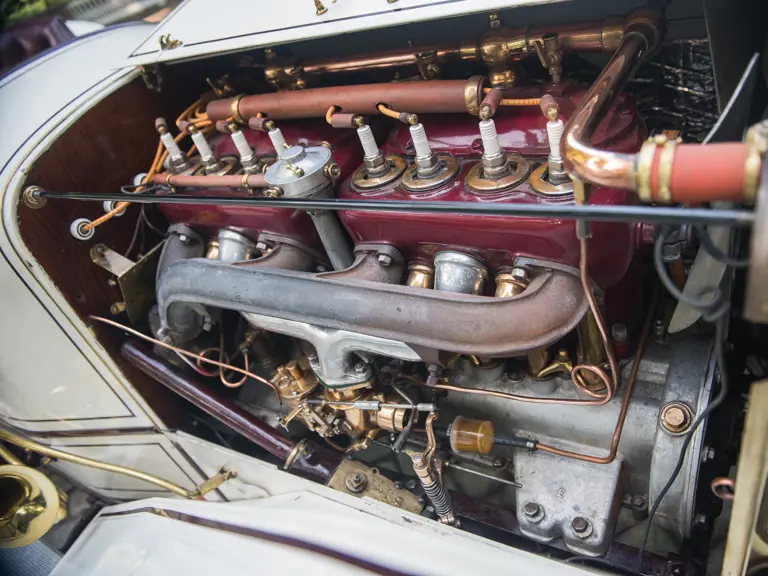
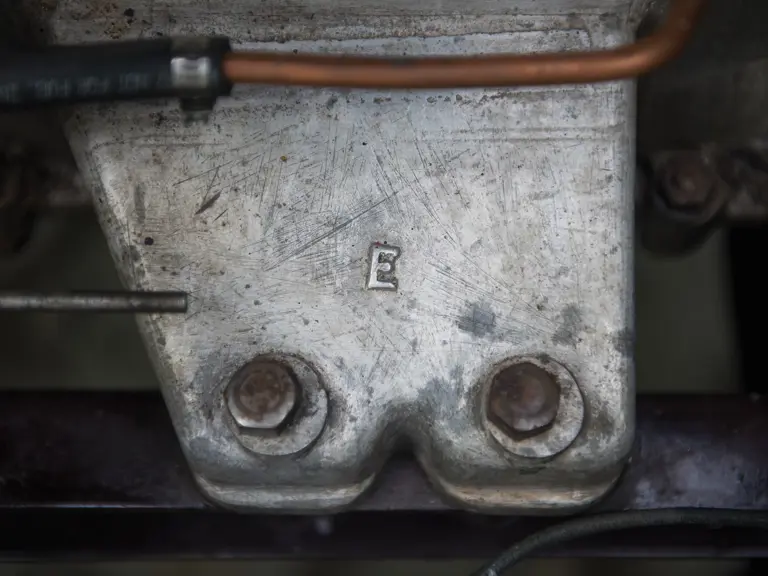
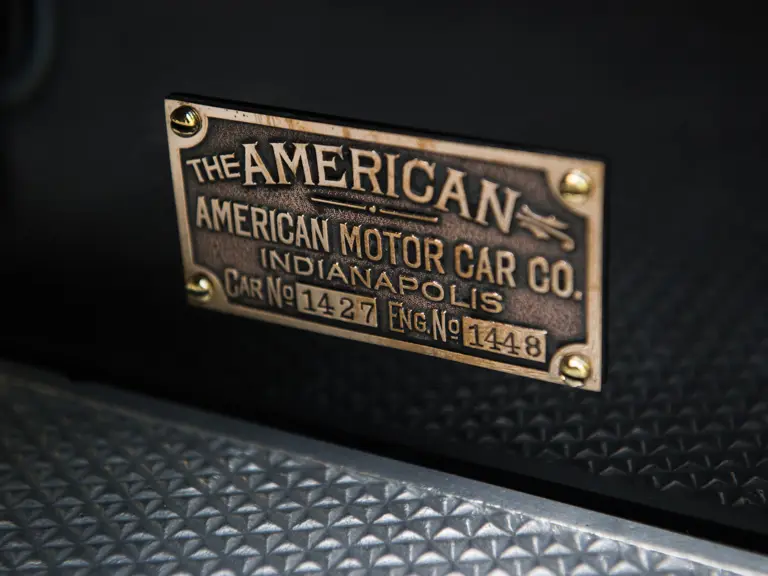
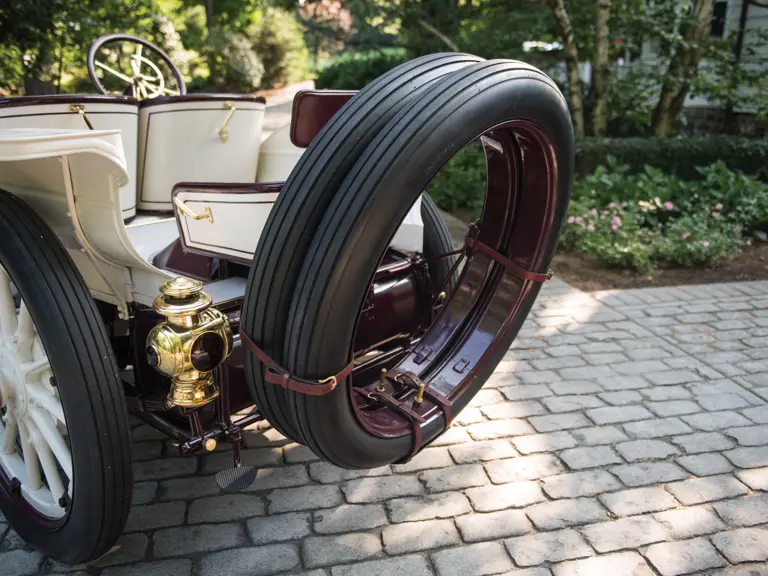

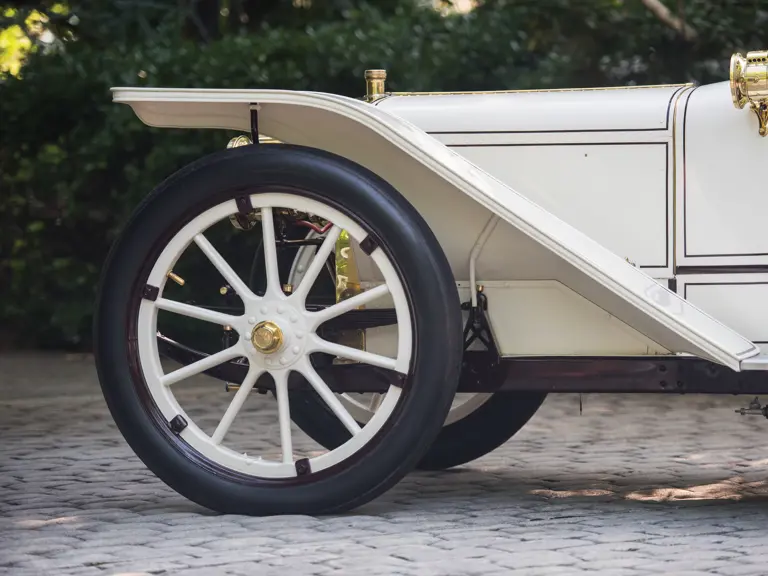

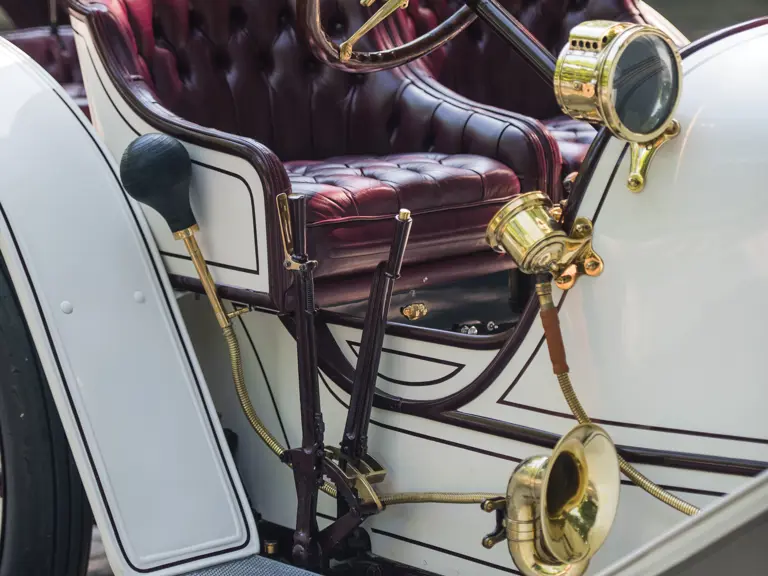

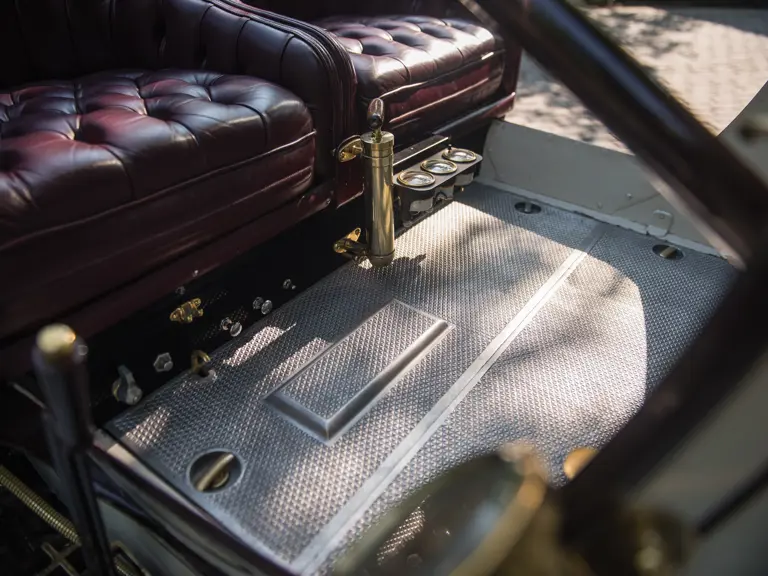

 | Monterey, California
| Monterey, California
